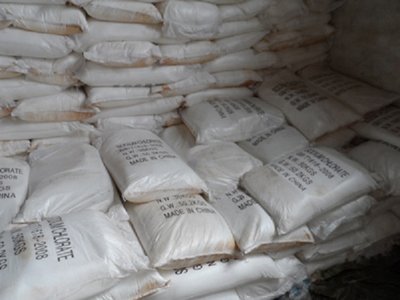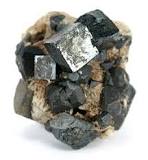Sodium Chlorate Acid or Base? Properties Explained
Sodium chlorate (NaClO₃) is a widely utilized chemical compound that plays a significant role in various industrial and agricultural processes. When encountering any chemical substance, one of the fundamental questions that arises is: is it an acid, a base, or neutral? Comprehending the chemical nature of sodium chlorate, alongside its other crucial properties, is paramount for ensuring its safe and effective application. This comprehensive guide will elucidate whether NaClO₃ leans towards acidity or alkalinity and delve into its essential chemical properties.

Sodium Chlorate (NaClO₃): Neither Acid Nor Base – It’s a Neutral Salt
To accurately determine whether sodium chlorate is an acid or a base, we must examine its behavior when dissolved in water and consider its chemical origins.
Sodium chlorate is classified as a salt. Specifically, it is the product of a neutralization reaction between a strong base, sodium hydroxide (NaOH), and a strong acid, chloric acid (HClO₃). The balanced chemical equation for this reaction is as follows:
NaOH(aq) + HClO₃(aq) → NaClO₃(aq) + H₂O(l)
When a salt derived from the reaction of a strong acid and a strong base is dissolved in water, it typically does not undergo significant hydrolysis. Hydrolysis is the process where ions of the salt react with water molecules to produce either hydrogen ions (H⁺), leading to an acidic solution, or hydroxide ions (OH⁻), resulting in a basic solution.
In the case of sodium chlorate, the sodium ion (Na⁺) is the conjugate acid of the strong base NaOH, making it an exceptionally weak acid with a negligible tendency to donate protons in water. Similarly, the chlorate ion (ClO₃⁻) is the conjugate base of the strong acid HClO₃, rendering it a very weak base with minimal ability to accept protons or produce hydroxide ions in water.
Consequently, when sodium chlorate (NaClO₃) dissolves in water, the concentrations of H⁺ and OH⁻ ions remain essentially equal to that of pure water. Therefore, an aqueous solution of sodium chlorate is considered neutral, exhibiting a pH of approximately 7.
In essence, sodium chlorate (NaClO₃) itself is neither an acid nor a base. It is a neutral salt. It does not significantly contribute to an increase in H⁺ ions (characteristic of acids) or OH⁻ ions (characteristic of bases) in an aqueous environment.
Key Chemical Properties of Sodium Chlorate (NaClO₃)
Despite its neutral nature in solution, sodium chlorate possesses several significant chemical properties that dictate its applications and the necessary precautions for its handling:
- Potent Oxidizing Agent: Sodium chlorate stands out as a powerful oxidizing agent. This means it has a strong tendency to accept electrons from other substances, causing those substances to undergo oxidation. This inherent property is fundamental to its primary applications, including its use as a bleaching agent and a herbicide.
- Vigorous Reactions with Reducing Agents: Due to its robust oxidizing capabilities, sodium chlorate can react vigorously, and often dangerously, with various reducing agents. These include organic materials (such as wood, paper, and clothing), finely divided metals, sulfur, and phosphorus. Such reactions can generate intense heat, leading to fires or even explosions.
- Decomposition Upon Heating: When subjected to temperatures exceeding its melting point (approximately 248-261°C), sodium chlorate undergoes thermal decomposition. This process releases oxygen gas (O₂) and forms sodium chloride (NaCl), as represented by the following balanced chemical equation: The liberation of oxygen during this decomposition can significantly intensify any existing fires.
2 NaClO₃(s) → 2 NaCl(s) + 3 O₂(g) - Hazardous Reaction with Strong Acids: A particularly dangerous reaction occurs when sodium chlorate comes into contact with strong acids, such as sulfuric acid (H₂SO₄). This interaction can produce highly toxic and unstable chlorine dioxide (ClO₂) gas, which is also explosive. The reaction proceeds as follows: The chloric acid (HClO₃) formed in this reaction is itself unstable and readily decomposes into chlorine dioxide, chlorine gas (Cl₂), and water.
2 NaClO₃(s) + H₂SO₄(aq) → Na₂SO₄(aq) + 2 HClO₃(aq) - High Solubility in Water: Sodium chlorate exhibits excellent solubility in water, readily dissolving to form a neutral solution. Its solubility increases proportionally with temperature.
- Hygroscopic Nature: Sodium chlorate is hygroscopic, meaning it has the ability to absorb moisture directly from the surrounding air. This absorption of water can lead to caking of the solid material and significantly increases the risk of fire if the moist salt comes into contact with organic substances.
Common Uses of Sodium Chlorate Based on Its Properties
The distinctive chemical properties of sodium chlorate, particularly its strong oxidizing prowess, underpin its utility in a range of applications:
- Effective Herbicide and Defoliant: Sodium chlorate is widely employed as a non-selective herbicide, effectively killing a broad spectrum of plant life by disrupting their essential metabolic processes through oxidation. It also acts as a defoliant, causing plants to shed their leaves.
- Key Agent in Chlorine Dioxide Production: In the pulp and paper industry, sodium chlorate serves as a crucial precursor in the production of chlorine dioxide (ClO₂), a highly efficient bleaching agent used to whiten wood pulp.
- Intermediate in Chemical Synthesis: Sodium chlorate acts as an important intermediate in the synthesis of other valuable chlorates, perchlorates, and the aforementioned chlorine dioxide.
- Oxidizing Agent in Industrial Processes: Its strong oxidizing capability makes it useful in various chemical syntheses and industrial processes, including metal finishing and the extraction of specific metals from their ores.
- Oxygen Source in Chemical Oxygen Generators: In specialized chemical oxygen generators, such as those found in aircraft emergency oxygen systems, the controlled thermal decomposition of sodium chlorate provides a reliable source of breathable oxygen.
Safety Precautions When Handling Sodium Chlorate
Given its potent oxidizing nature and its potential for hazardous reactions, sodium chlorate demands careful handling and strict adherence to safety protocols:
- Rigorous Avoidance of Combustible Materials: It is imperative to keep sodium chlorate isolated from organic materials, flammable substances, and reducing agents to prevent the initiation of fires or explosions.
- Strict Prevention of Contact with Strong Acids: Mixing sodium chlorate with strong acids poses a significant risk of generating highly toxic and potentially explosive chlorine dioxide gas. Such contact must be strictly avoided.
- Mandatory Use of Personal Protective Equipment (PPE): When handling sodium chlorate, it is essential to wear appropriate personal protective equipment (PPE) at all times. This includes chemical-resistant gloves, eye protection (such as safety goggles or a face shield), and respiratory protection if there is a risk of dust or aerosol formation.
- Proper Storage Procedures: Sodium chlorate should be stored in a cool, dry, and well-ventilated environment, segregated from incompatible materials. Containers must be kept tightly closed to prevent the absorption of moisture from the air.
- Comprehensive Review of Safety Data Sheet (SDS): Always consult the Safety Data Sheet (SDS) provided by the manufacturer for detailed and specific safety information, handling procedures, and emergency response protocols.
Kết luận: Natri Clorat – Một loại muối trung tính có đặc tính oxy hóa mạnh mẽ
Tóm lại, Natri clorat (NaClO₃) là một muối trung tính được hình thành thông qua phản ứng của axit mạnh và bazơ mạnh. Mặc dù nó không thể hiện hành vi axit hoặc bazơ đáng kể trong dung dịch nước, nhưng nó là một chất oxy hóa đáng gờm với các đặc tính hóa học đáng chú ý khiến nó trở nên vô giá trong nhiều ứng dụng công nghiệp và nông nghiệp. Tuy nhiên, khả năng phản ứng vốn có của nó, đặc biệt là tương tác của nó với các vật liệu dễ cháy và axit mạnh, nhấn mạnh tầm quan trọng của việc xử lý tỉ mỉ và kiên định tuân thủ các biện pháp phòng ngừa an toàn nghiêm ngặt. Sự hiểu biết thấu đáo về các đặc tính này là không thể thiếu để sử dụng natri clorat an toàn và hiệu quả.
FAQ
Công thức hóa học của natri clorat là gì?
Công thức hóa học của natri clorat là NaClO3.
Natri clorat là axit hay bazơ?
Natri clorat không phải là axit mạnh cũng không phải bazơ mạnh. Nó là một loại muối trung tính có thể phản ứng trong nước.
Các ứng dụng công nghiệp phổ biến của natri clorat là gì?
Nó được sử dụng để sản xuất thuốc diệt cỏ, giấy và như một chất oxy hóa trong các quá trình hóa học.
Đặc điểm vật lý của natri clorat là gì?
Natri clorat là một chất rắn kết tinh màu trắng. Nó ổn định ở nhiệt độ phòng.
Natri clorat được hình thành như thế nào?
Nó được tạo ra bằng cách trộn natri hydroxit với khí clo. Điều này tạo ra natri clorat và nước.
Độ pH của dung dịch natri clorat là bao nhiêu?
Dung dịch natri clorat có độ pH trung tính. Điều này là do nó là một loại muối trung tính không thay đổi độ pH nhiều.
yuhan Sodium Chlorate Acid:https://www.yuhanchemi.com/sodium-chlorate
We support product customization Specific specifications, grades, reagents, price comparison is welcome
Contact us:https://www.yuhanchemi.com/contact







